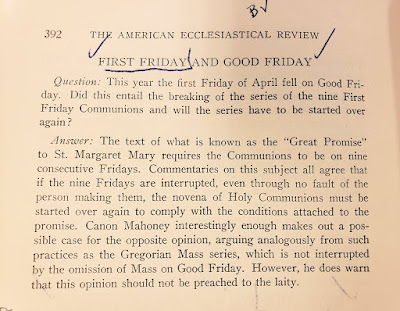According to the Catholic Encyclopedia:
FRONT One side of the medal bears an image of St. Benedict, holding a cross in the right hand and the Holy Rule in the left. On the one side of the image is a cup, on the other a raven, and above the cup and the raven are inscribed the words: “Crux Sancti Patris Benedicti” (Cross of the Holy Father Benedict). Round the margin of the medal stands the legend “Ejus in obitu nostro praesentia muniamus” (May we at our death be fortified by his presence).
BACK The reverse of the medal bears a cross with the initial letters of the words: “Crux Sacra Sit Mihi Lux” (The Holy Cross be my light), written downward on the perpendicular bar; the initial letters of the words, “Non Draco Sit Mihi Dux” (Let not the dragon be my guide), on the horizontal bar; and the initial letters of “Crux Sancti Patris Benedicti” in the angles of the cross. Round the margin stand the initial letters of the distich: “Vade Retro Satana, Nunquam Suade Mihi Vana — Sunt Mala Quae Libas, Ipse Venena Bibas” (Begone, Satan, do not suggest to me thy vanities — evil are the things thou profferest, drink thou thy own poison). At the top of the cross usually stands the word Pax (peace) or the monogram I H S (Jesus).
The History of the Jubilee Medal:
Any priest may receive the faculties to bless these medals.
The medal was made in 1880, to commemorate the fourteenth centenary of St. Benedict’s birth. The Archabbey of Monte Cassino has the exclusive right to strike this medal. The ordinary medal of St. Benedict usually differs from the preceding in the omission of the words “Ejus in obitu etc.”, and in a few minor details. (For the indulgences connected with it see Beringer, “Die Ablässe”, Paderborn, 1906, p. 404-6.) The habitual wearer of the jubilee medal can gain all the indulgences connected with the ordinary medal and, in addition: (1) All the indulgences that could be gained by visiting the basilica, crypt, and tower of St. Benedict at Monte Cassino (Pius IX, 31 December, 1877) (2) A plenary indulgence on the feast of All Souls (from about two o’clock in the afternoon of 1 November to sunset of 2 November), as often as (toties quoties), after confession and Holy Communion, he visits any church or public oratory, praying there according to the intention of the pope, provided that he is hindered from visiting a church or public oratory of the Benedictines by sickness, monastic enclosure or a distance of at least 1000 steps. (Decr. 27 February, 1907, in Acta S. Sedis, LX, 246.)
[Note the toties quoties indulgence was extended in 1914 to anyone, even those who do not have or use the Jubilee Medal]
It is doubtful when the Medal of St. Benedict originated. During a trial for witchcraft at Natternberg near the Abbey of Metten in Bavaria in the year 1647, the accused women testified that they had no power over Metten, which was under the protection of the cross. Upon investigation, a number of painted crosses, surrounded by the letters which are now found on Benedictine medals, were found on the walls of the abbey, but their meaning had been forgotten. Finally, in an old manuscript, written in 1415, was found a picture representing St. Benedict holding in one hand a staff which ends in a cross, and a scroll in the other. On the staff and scroll were written in full the words of which the mysterious letters were the initials. Medals bearing the image of St. Benedict, a cross, and these letters began now to be struck in Germany, and soon spread over Europe. They were first approved by Benedict XIV in his briefs of 23 December, 1741, and 12 March, 1742.
Specific Promises associated with the St. Benedict Medal:
1. To destroy witchcraft and all other diabolical and haunting influences;
2. To impart protection to persons tempted, deluded, or tormented by evil spirits;
3. To obtain the conversion of sinners into the Catholic Church, especially when they are in danger of death;
4. To serve as an armor against temptation;
5. To destroy the effects of poison;
6. To secure a timely and healthy birth for children;
7. To afford protection against storms and lightning;
8. To serve as an efficacious remedy for bodily afflictions and a means of protection against contagious diseases.
How to wear the medal:
1. On a chain around the neck;
2. Attached to one’s rosary;
3. Kept in one’s pocket or purse;
4. Placed in one’s car or home;
5. Placed in the foundation of a building;
6. Placed in the center of a cross.
How to Order One: Amazon has a variety of Jubilee Medals

































